Planning for York Road's Ongoing Revitalization
York Road runs through the heart of north central
Baltimore City and into Baltimore County, and by many accounts, this commercial
corridor is thriving. The last few years have witnessed the establishment of
many successful new businesses, the re-opening of the Senator Theater, and a
total overhaul of Belvedere Square and Market. However, development has
been uneven, many buildings are underutilized or in a state of disrepair and
the corridor lacks a cohesive image as a commercial destination.
Map: York Road Commercial Nodes
 With these opportunities and challenges in mind,
staff from the Department of Planning, Baltimore Development Corporation and
Loyola University joined with institutional and community partners for the York
Road Urban Land Institute (ULI) Technical Assistance Panel (TAP) in June 2013.
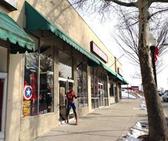 This multi-day planning process examined opportunities for improving the
York Road corridor from 39th Street in Baltimore City to Towsontown Boulevard
in Towson. Over 200 area stakeholders were present for discussions and
recommendations, which focused on opportunities for commercial revitalization,
transportation and streetscaping improvements, and improved urban design.
The final document is available on our website here.
|
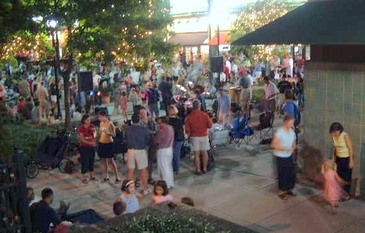 As a
result of the ULI TAP, the York Road Commercial Revitalization Planning
Team (including representatives from the
Department of Planning) convened to facilitate implementation of the report’s
recommendations.
The group’s first major initiative is an RFP for a consultant
to develop an urban design and commercial strategies plan that will build from
the ULI recommendations and other past community engagement.
The end-result
will provide a blueprint of action items and create a vision for the commercial
corridor for the York Road Commercial Revitalization Planning Team (and
eventually for a new York Road redevelopment organization) to share with
businesses, communities, the City of Baltimore, and potential investors.
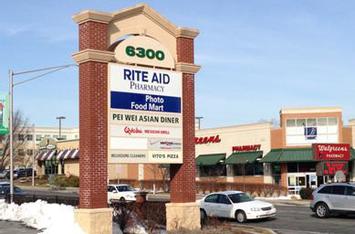 RFP: Urban Design and Commercial Strategies for the York Road Corridor
The York Road Commercial Revitalization Planning Team RFP for an "Urban
Design and Commercial Straegies Plan for Baltimore City’s York Road Corridor”
is available on the Department of Planning website.
Proposals are due March 28, 2014.
RFP: West Side UniverCity Revitalization Projects & Services
Two Request for Proposals (RFP) for West Side redevelopment projects have been issued by the City, along with a Request for Fee Proposals from architecture firms to assist with development concepts, renderings, and historic preservation consulting for future redevelopment of additional City-owned properties in the Bromo Tower Arts & Entertainment District.
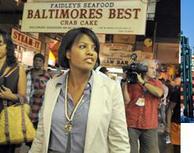 “I am very excited about the actions underway in the UniverCity Partnership project area. Architects, urban planners and food retail experts are currently working with tenants, customers and other stakeholders on a capital improvement program to restore Lexington Market as the region’s magnet for fresh and unique foods,” said Mayor Stephanie Rawlings-Blake.
“An enterprising developer senses that the Everyman Theater and our efforts at Lexington Market have created an opportunity for smaller infill projects, and is preparing 106 through 110 North Eutaw Street for renovation this summer. Bike lanes and a dog park will be completed next fall, just in time to serve the new residents of the 520 Park Avenue project, as well as existing residents of Seton Hill and Mount Vernon.
These are just a few of the forthcoming projects that demonstrate how much progress has been made in the past 3 years. I am pleased with the UniverCity Partnership’s continued focus on developing downtown’s west side as a mixed-use, mixed-income neighborhood," Mayor Rawlings-Blake added.
|
 The two RFPs, as well as a Request for Fee Proposals, are located on BDC’s website.
For more information on these offerings, please contact Nancy Jordan-Howard, BDC, at 410-837-9305, or nhoward@baltimoredevelopment.com.
|
By
the Numbers – Progress toward a Growing Baltimore
The number of housing units is a
good indicator of progress toward growing the City, by retaining current residents and attracting
new residents. Between 2010 and 2014,
the following changes have taken place in the housing market:
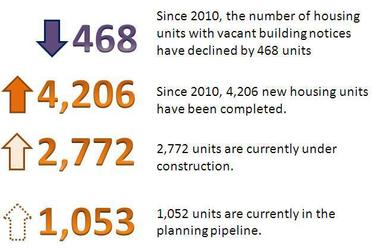 |